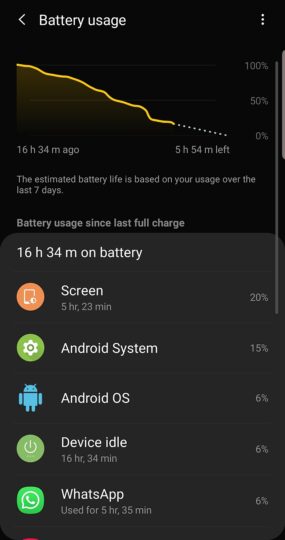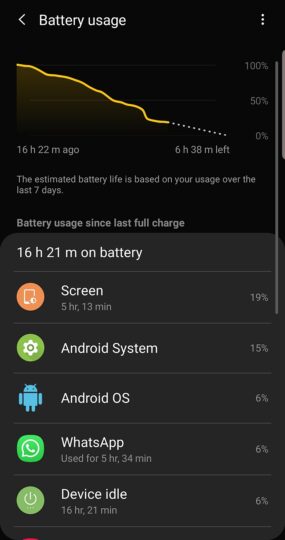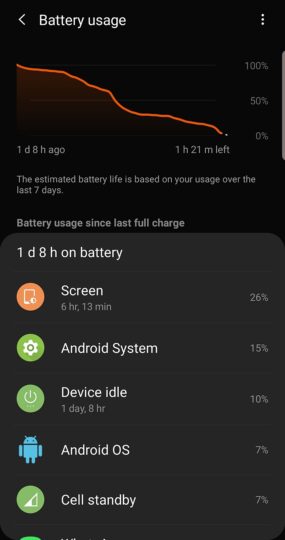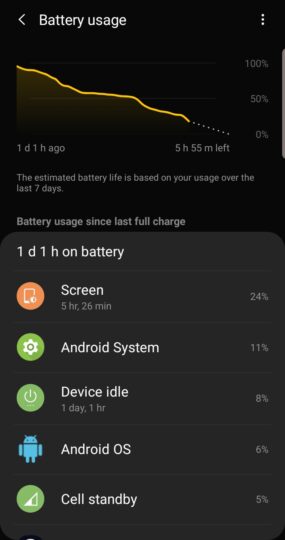Where Apple decided to use the tenth anniversary of the iPhone to finally bring the device up to par with the competition (adding an AMOLED display and reducing the atrociously large bezels the iPhone had always had before the iPhone X), Samsung went on a different tangent altogether. The Galaxy S10 is an impressive flagship and a substantial upgrade from its predecessor, but Samsung had something more exciting to show off.
Yes, Samsung took the wraps off the Galaxy Fold, the foldable smartphone it has been working on for almost five years. As a Samsung fan site, it would be an understatement to say everyone here at SamMobile was excited, primarily because someone was finally addressing the lack of innovation in the smartphone industry and Samsung itself was getting back in form. And, well, because the Korean giant’s foldable phone was finally here after years of rumors.
Sadly, it’s been a rough few days for the Galaxy Fold, with reports of the screen breaking for some reviewers. Most cases of the screen breaking have been because of user error — reviewers tried to remove the protective film that covers the foldable display, even though Samsung warns of the film’s importance on the packaging. The warnings aren’t enough, however. The Fold is also not protected well enough against dust, so Samsung has recalled the review units and decided to delay the launch.
Our unit, thankfully, had no issues, and this “review” is based on our experience with the product Samsung put in reviewers’ hands ahead of the retail launch. We say review with quotes because it’s unclear in what form and with what improvements the Fold will come back. There’s a chance it might even be discontinued if Samsung decides the hardware needs a major revision, so we’ll have an updated review later this year based on what ultimately happens.
Galaxy Fold review: Design
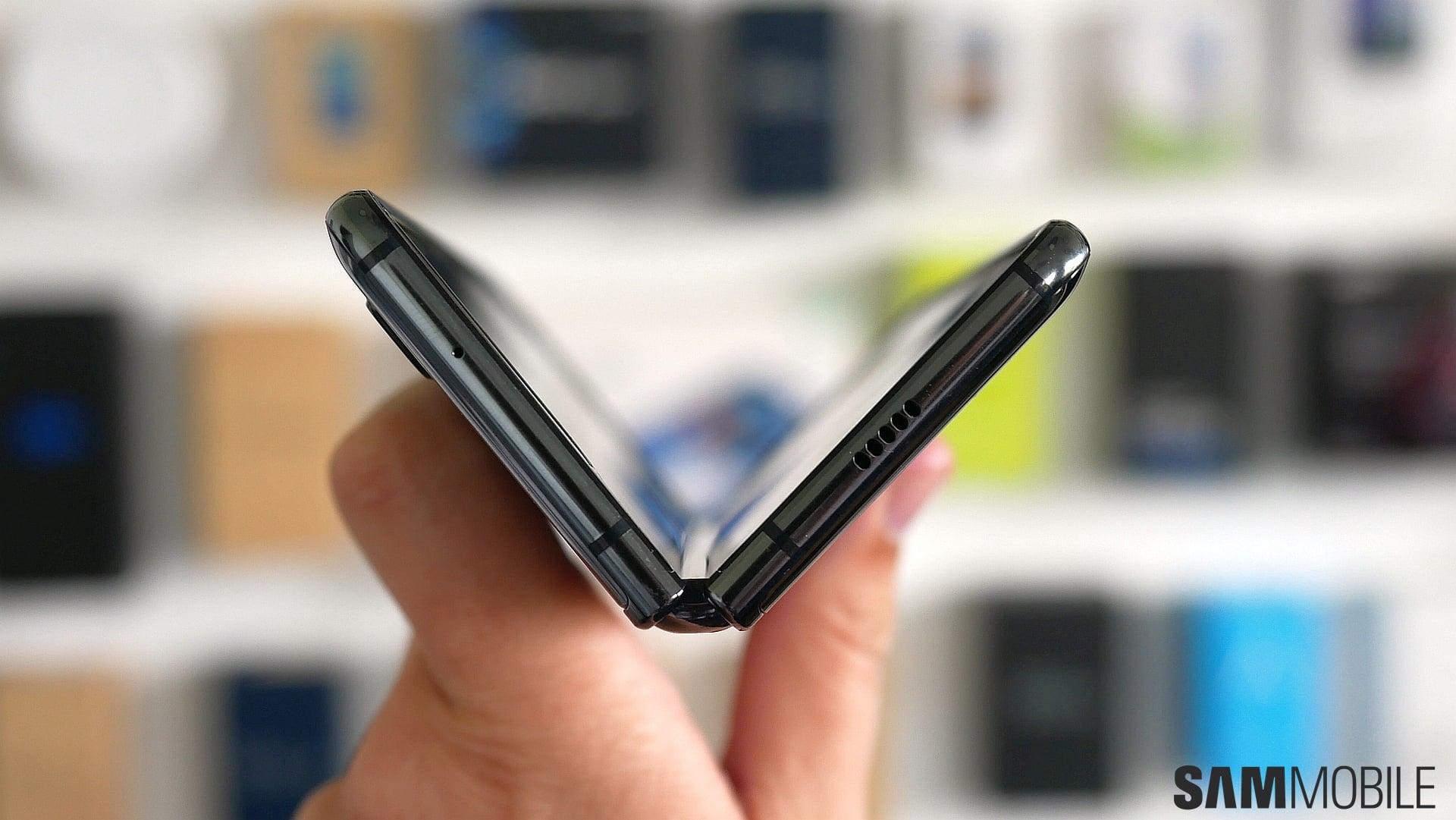
I could probably run out of adjectives when describing how awesome it feels the first time you fold this thing. Thanks to the strong magnets on either side of the device, it snaps shut like those flip phones of old. And it’s as satisfying to unfold; the main 7.3-inch Infinity Flex AMOLED display unfurls and snaps fully open with a clicking sound.
A complex hinge with multiple interlocking gears at the center of the device makes this folding and unfolding possible – the Fold is rated for 200,000 folds, or 100 folds every day for five years (here’s someone folding and unfolding it a thousand times live on video). You can’t see the hinge, but you can feel how solid it is every time you fold or unfold the Galaxy Fold. And it all feels highly premium as well.
The Fold is rather thick in the folded state, but I didn’t find it to be too uncomfortable to keep in my pockets, as it’s long but not very wide. Of course, your mileage will vary. Those wearing tight jeans may have trouble walking around with the Fold in their pocket. There’s also the fact that there’s a small gap between the two halves of the device when it’s folded, so you’ll have to make sure you don’t absentmindedly put it in a pocket with something like keys or coins already in there. Or, you know, sit with it in your back pocket.
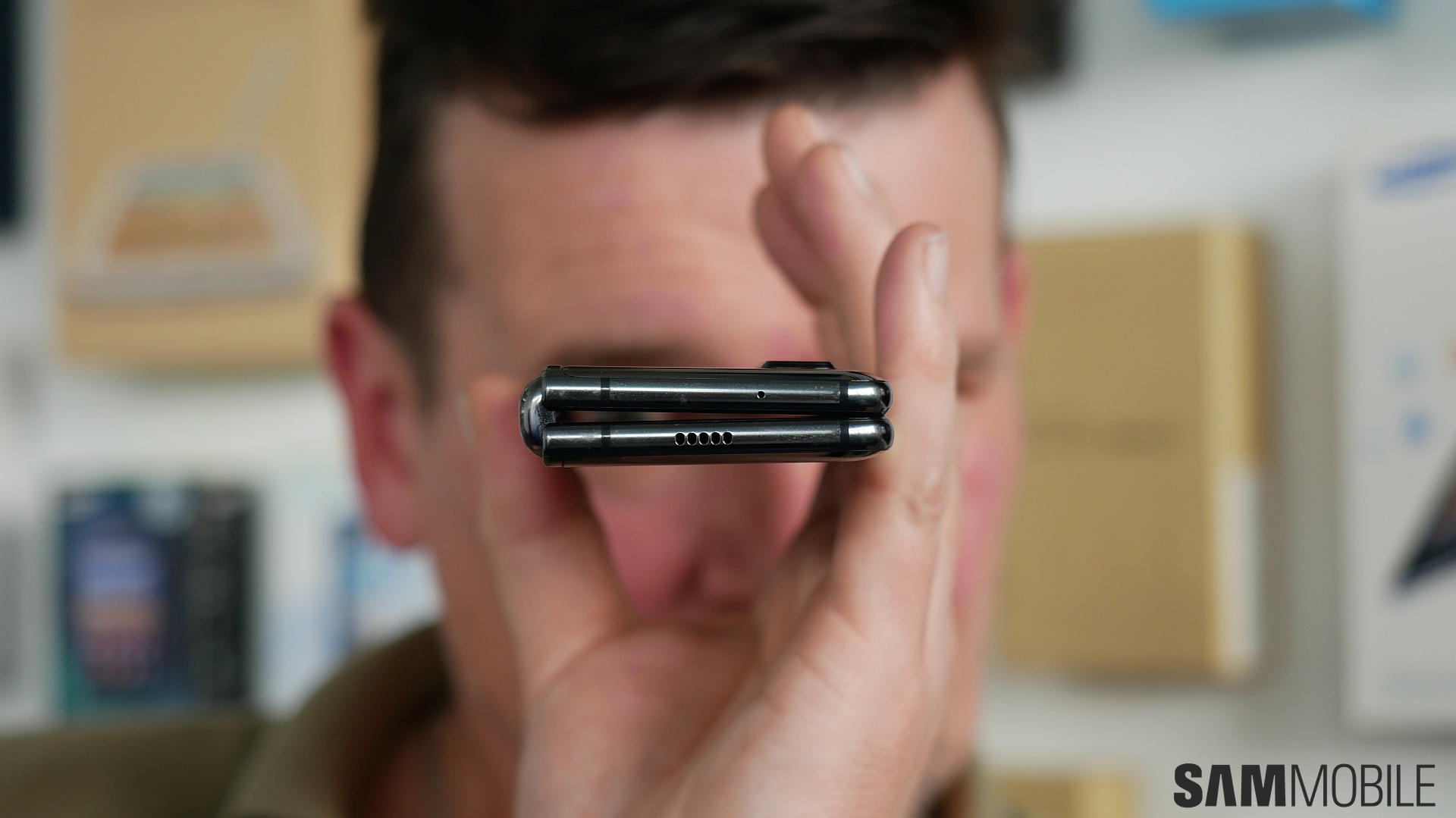
However, the biggest concern, as confirmed by Samsung, is the dust and minor debris that you find in the real world. There are small openings around the hinge through which dust or something like cloth lint (from your pockets) could enter and then lodge itself under the display. Whether Samsung will be able to easily close up those openings remains to be seen. As it stands, the Fold would need plenty of babying, so perhaps it’s a good thing the company has decided to delay its release.
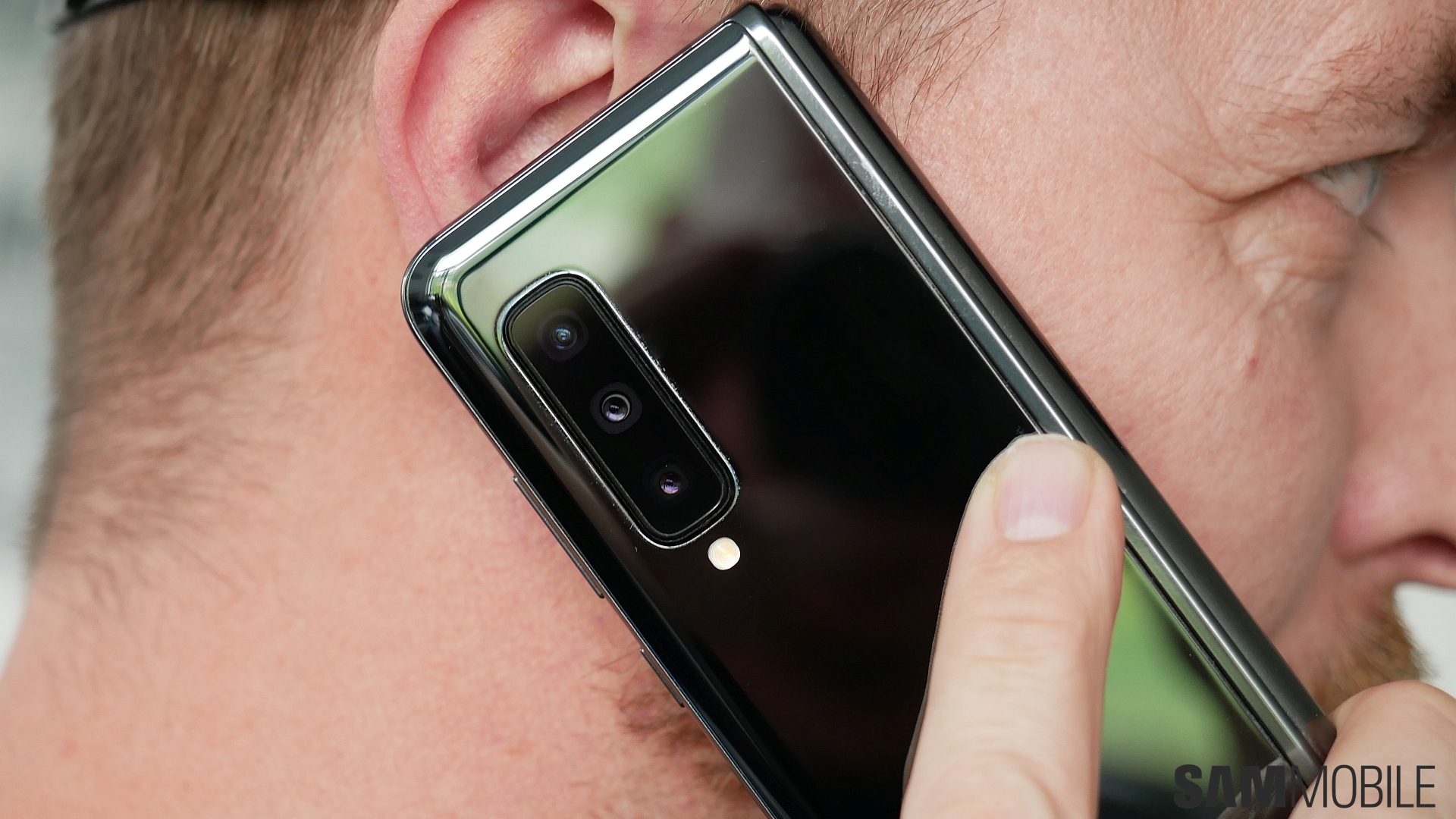
The Galaxy Fold doesn’t support 3.5 mm headphone jacks, but since Samsung bundles free Galaxy Buds, this didn’t really concern me. What does concern me is that there’s no notification LED on a $2000 phone. I understand why the Galaxy S10 doesn’t have it, but Samsung could have easily added a notification LED next to the cover display. Also an issue is the fingerprint sensor.
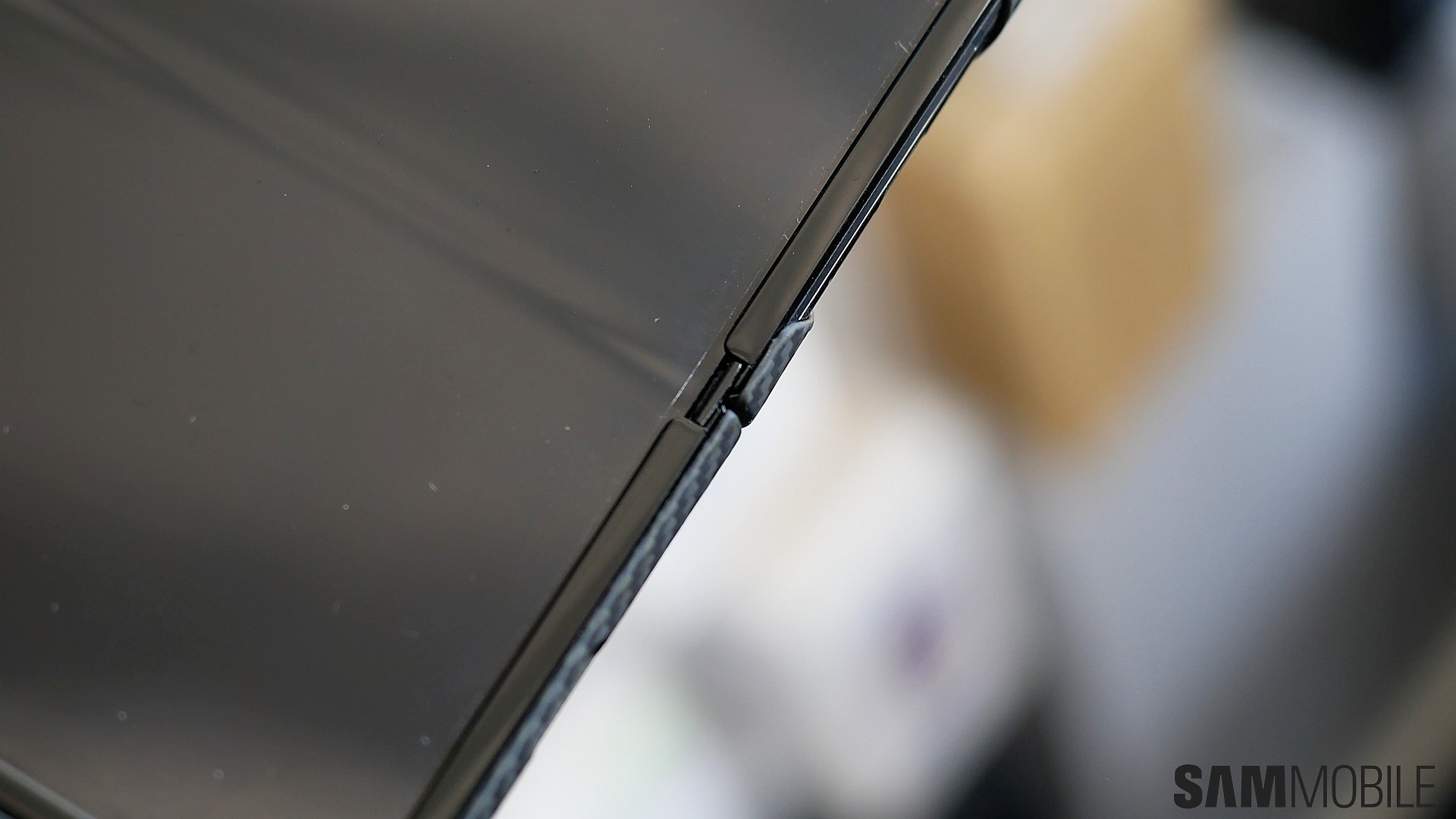
The fingerprint sensor is separate from the power button and is placed too low in both phone and tablet mode. It doesn’t help that the fingerprint sensor also doubles up as the Bixby key, so there were a few instances where I ended up long pressing the button by mistake and firing up Bixby Voice. And since there’s no iris sensor on the Fold, I used facial recognition for unlocking it, and that thankfully works pretty well most of the time.
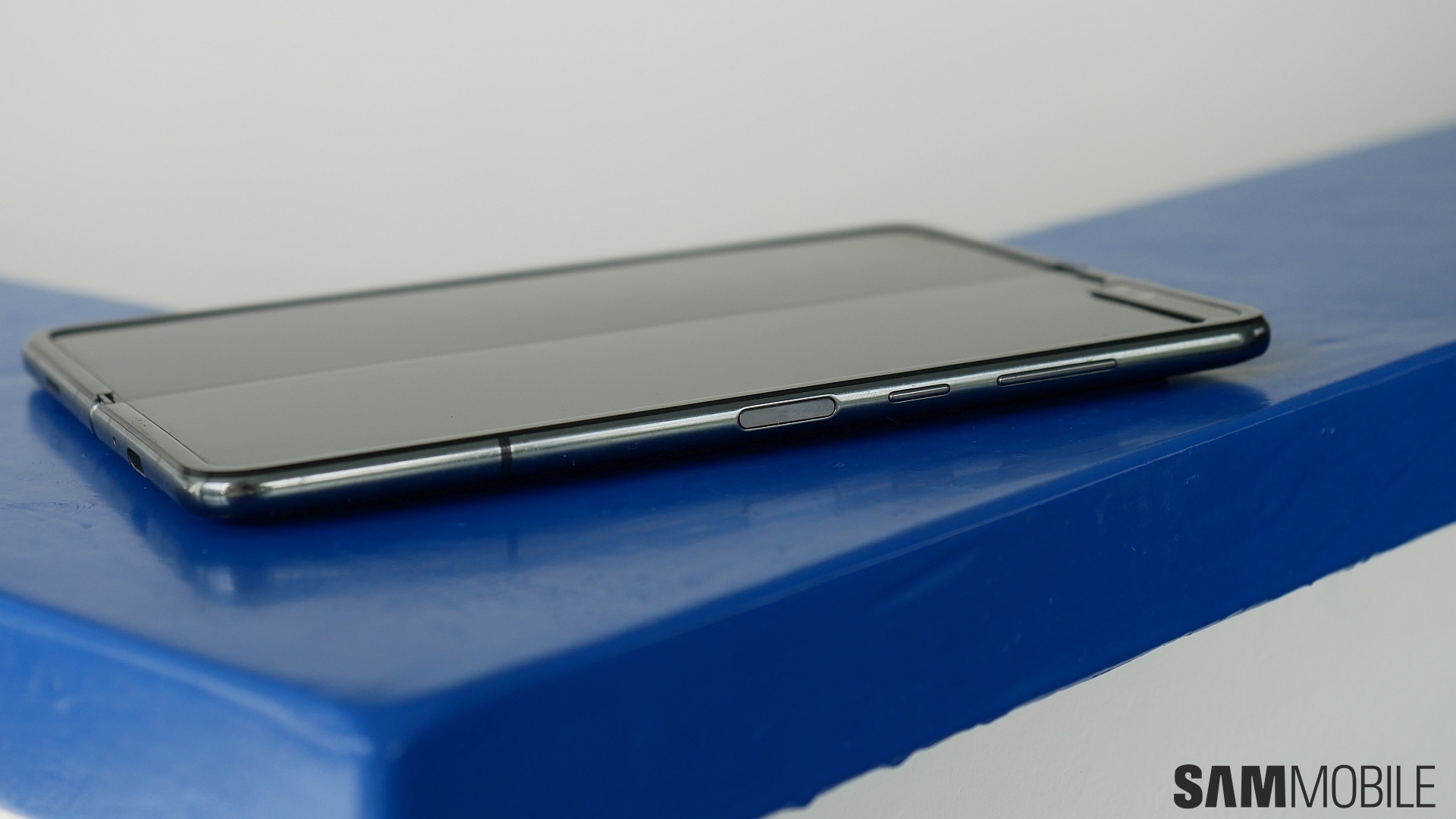
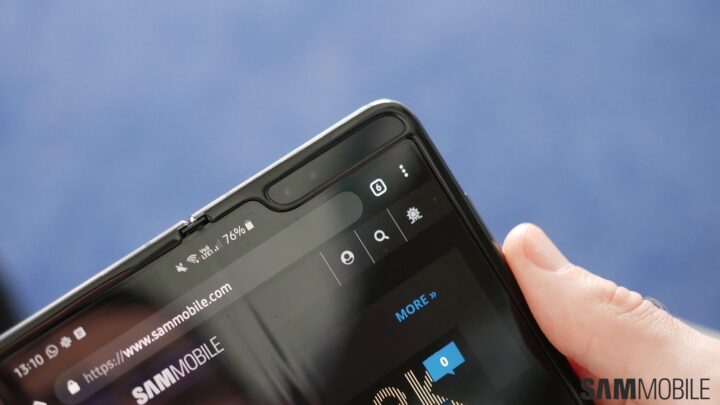
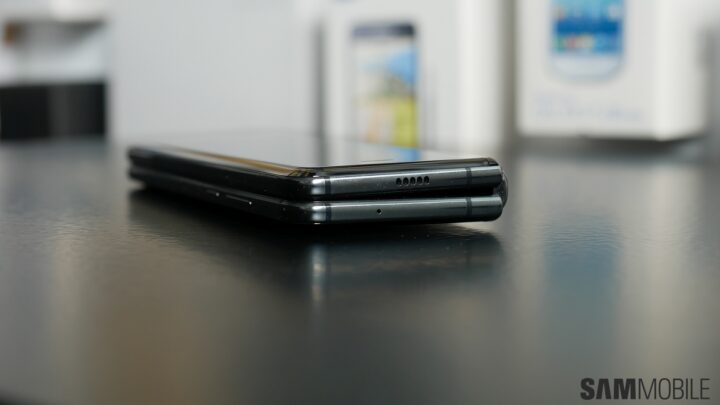
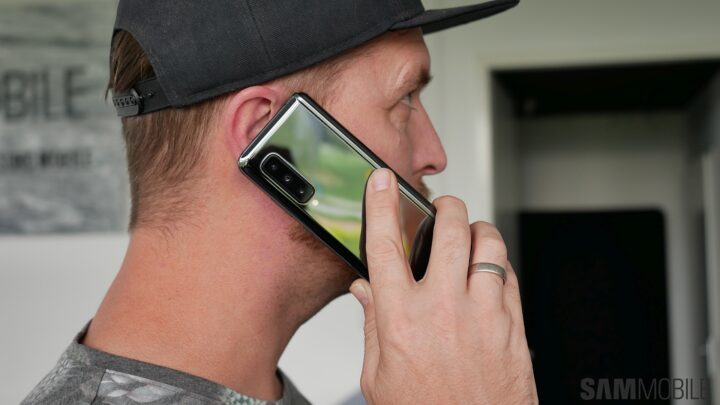
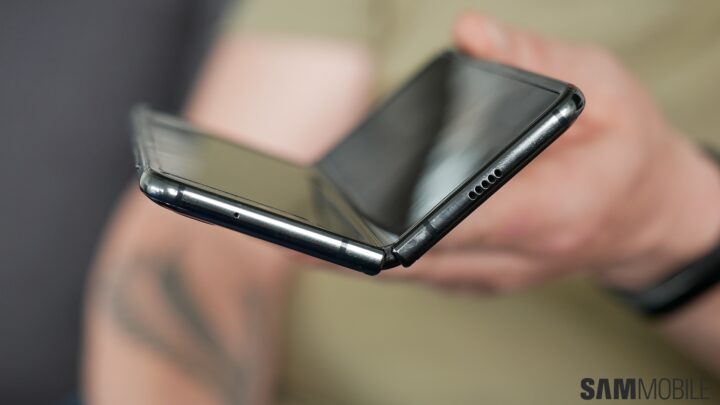
Galaxy Fold displays
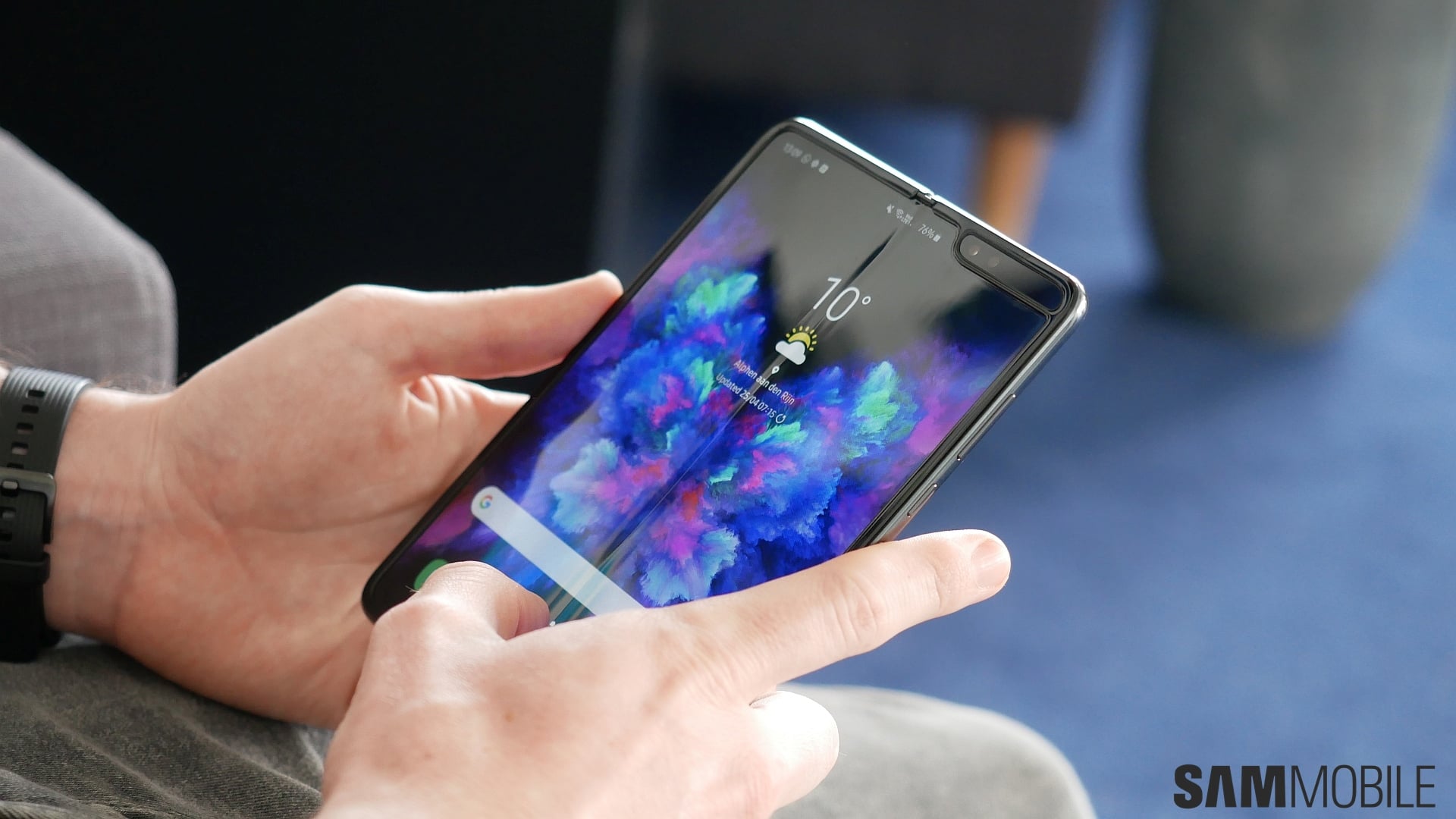
Samsung has equipped the Fold with a 4.6-inch Dynamic AMOLED panel for when you want to use the device as a phone. I used the cover display quite a bit during my time with the Fold, and it’s quite handy for quickly checking out your notifications, scanning for new content in apps, and, of course, making phone calls. That’s about it, though. You can use it for everything you can do on a regular phone, but the screen size is just too small for it to be an intuitive experience.
Typing is especially hard because the cover display is so narrow, and while I got used to it after a point, not everyone will be able to do so, especially with fat fingers. But then the cover display was never meant to be the star of the show. That’s the 7.3-inch display that you get when you unfold the Galaxy Fold, so let’s go ahead and talk about that, shall we?

Once the reality that your phone just turned into a tablet sets in, you’re greeted by a 7.3-inch Infinity Flex AMOLED display that’s made of plastic, because glass isn’t bendable just yet. It’s not often that you get such a big AMOLED display in a pocket-sized device, and that in itself is something that impressed me every time I unfolded the Fold. And this AMOLED panel is as good as Samsung’s flagship phone displays. It just doesn’t get as bright, but at 800 nits peak brightness, it’s much higher than any dedicated tablet display.
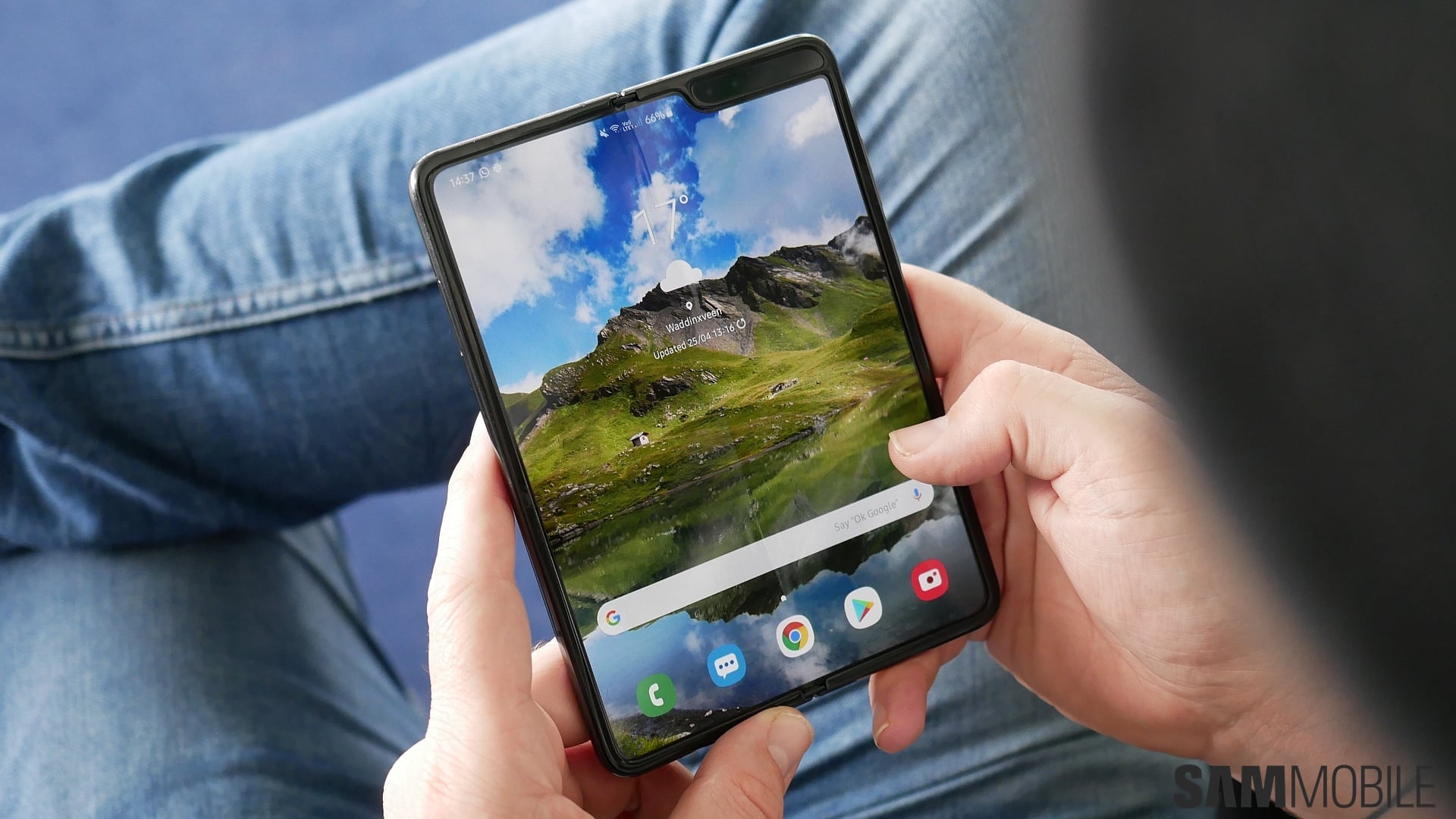
Okay, so what about that crease that has been hyped up in all the coverage about the Galaxy Fold? Well, it’s not noticeable if you look at the device head on, but see it at an angle and the crease will catch your eye; same goes for when there’s too much light around you. It won’t disturb you as much as you might think, though. A crease is going to be unavoidable with foldable displays, so what matters is just how much of a distraction it will be, and you’ll stop noticing the Fold’s crease after a while.
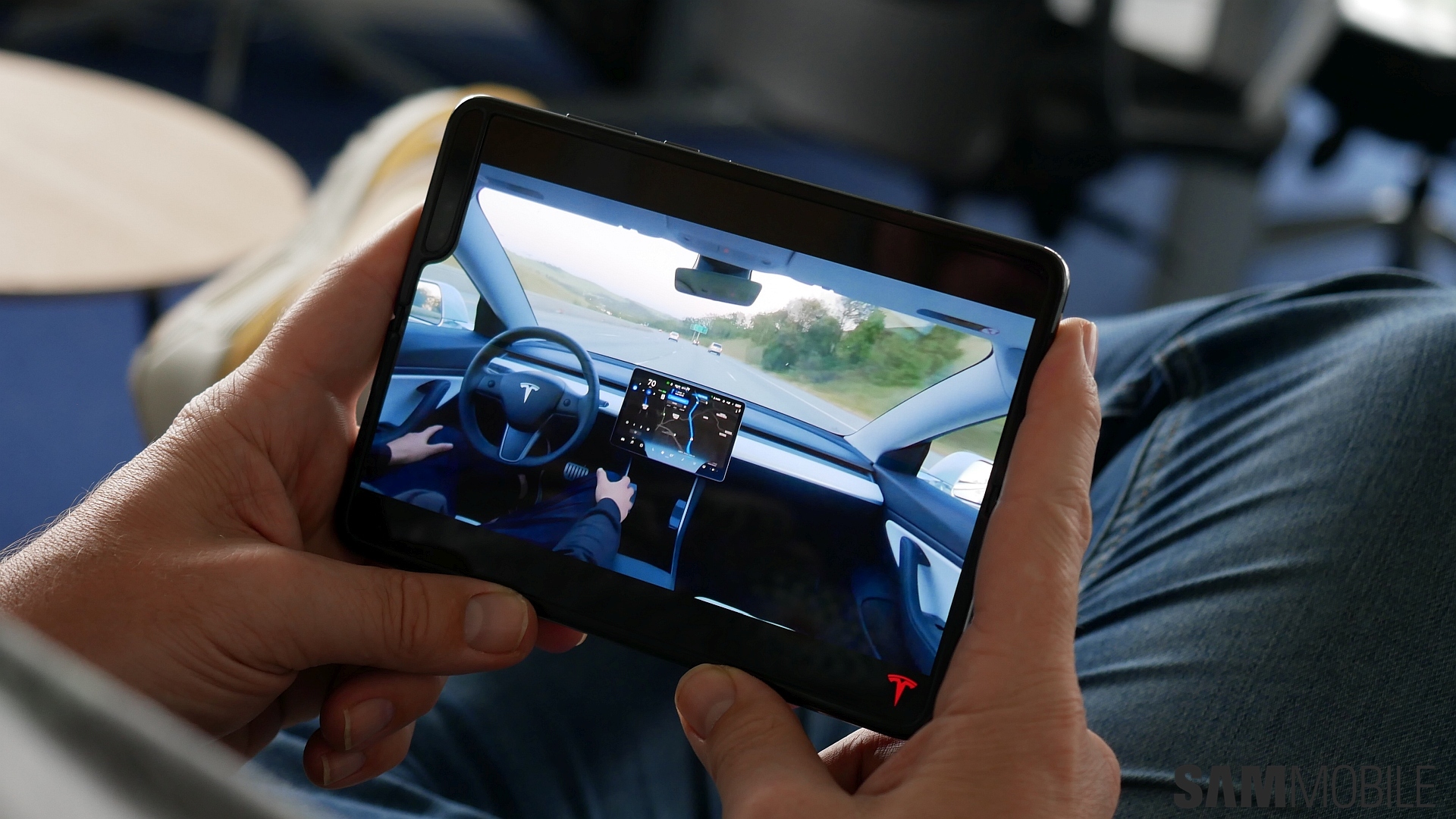
And when considering the possibilities a foldable device gives you, that crease becomes even less of a concern. However, while the 4:3 aspect ratio of the main display is great for browsing, it doesn’t lend itself well to watching videos. You will see black bars at the top and bottom, and worse still, the notch comes in the way of the already small viewing area for videos when you hold the Fold in landscape mode.
Perhaps a vertical notch would have been better, but then it would mess up the large amount of time you’ll spend holding the Fold in portrait orientation. The notch could certainly have been narrower — there seems to be a lot of wasted space in there, with the light and other sensors pretty wide apart for some reason.
Galaxy Fold software
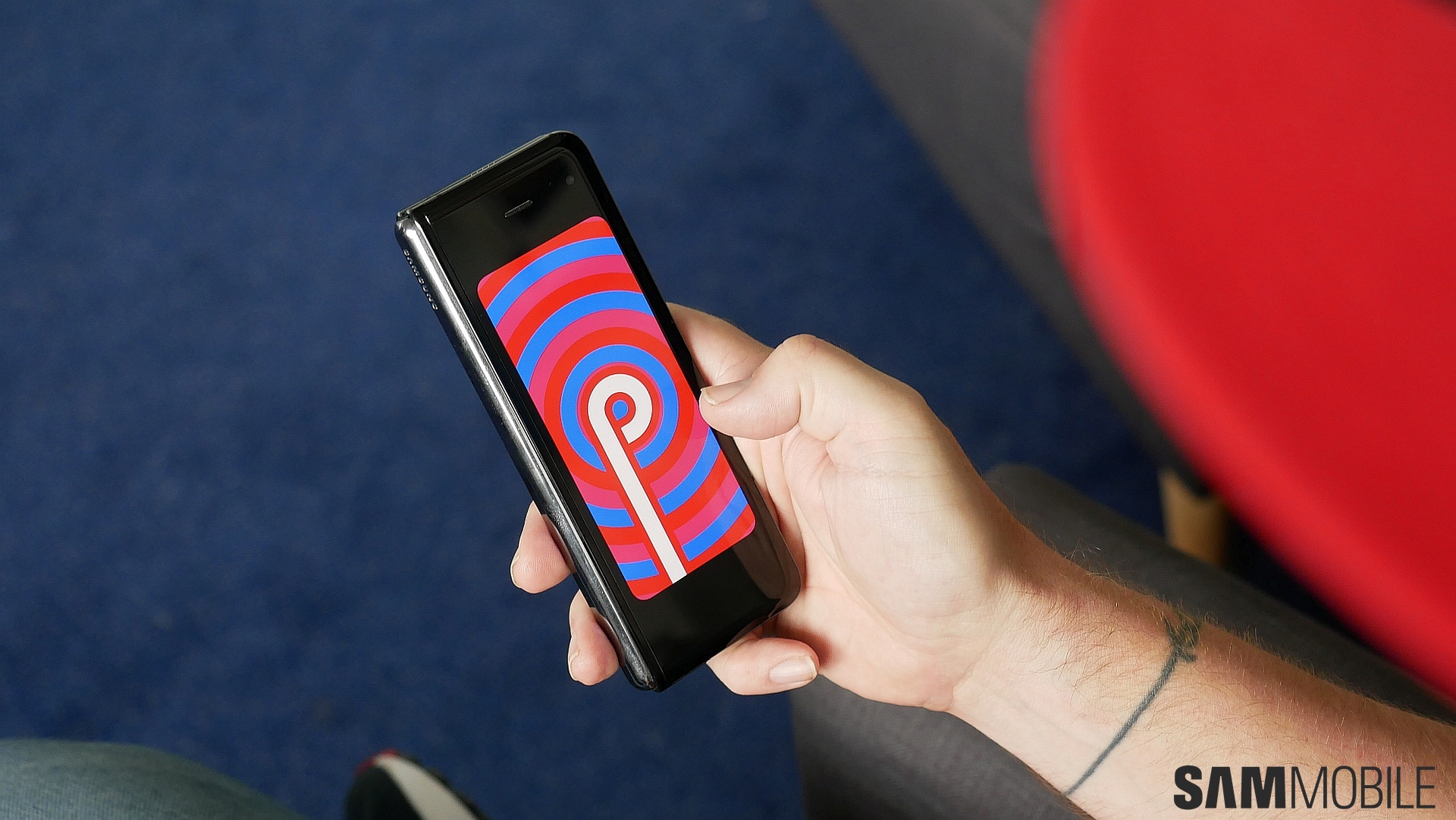
The Galaxy Fold runs Android Pie with One UI 1.2 out of the box. One UI 1.2 is newer than One UI 1.1 that you find on the Galaxy S10 and other Galaxy phones launched with Android Pie out of the box, but you won’t see any noticeable difference if you’ve already used a Galaxy S8 or Galaxy S9 with Pie. I’ve been using One UI since early January, so I was instantly at home on the Fold when I started using it.
First, let’s talk about what is arguably the main highlight of the software experience on the Galaxy Fold: App Continuity. Basically, any app that you are using on the cover display will expand to fit the 7.3-inch internal display when you unfold the device. Samsung has shown off some examples of this already, like with Google Maps, and it does work well with many apps, including the browser.
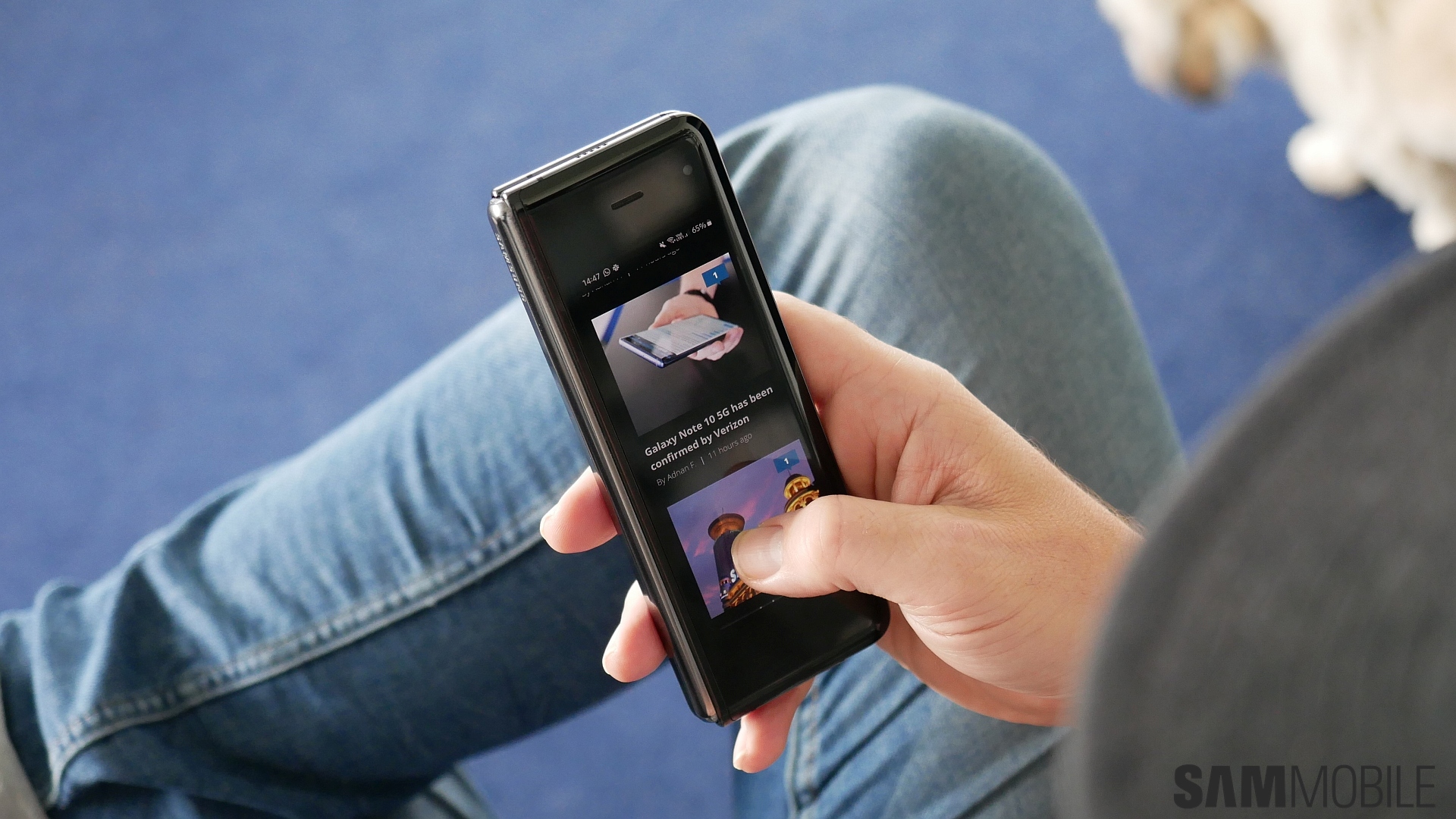
But not all apps support App Continuity. For such apps, the Fold shows you black bars at the left and right side, and you have to relaunch these apps to make them work properly on the big screen. Also, by default, App Continuity doesn’t work the opposite way. Apps open on the main display will not adjust and show up on the cover display when you fold the device, and you have to manually enable it on an app-to-app basis.
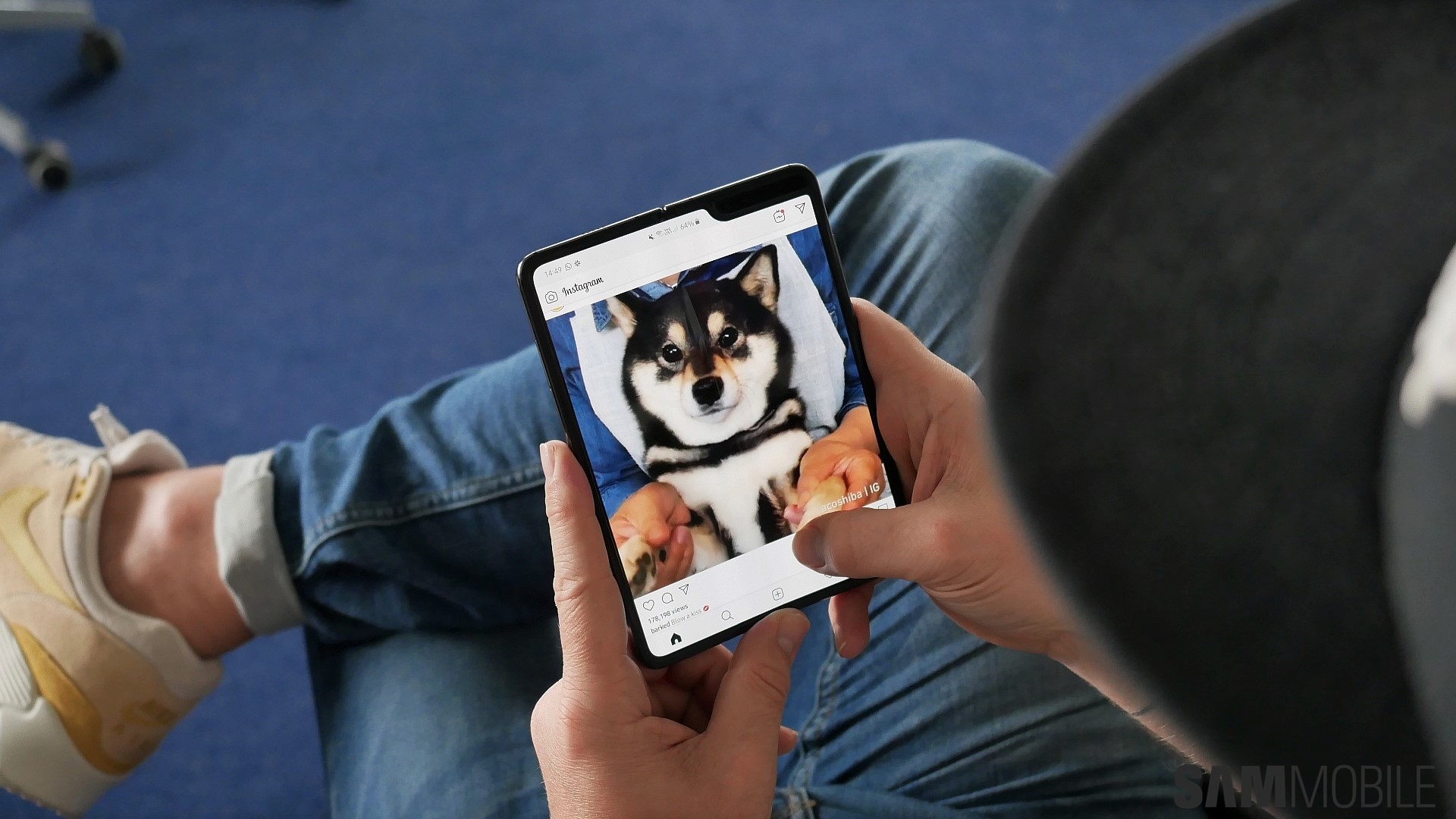
There are also some issues with apps like Facebook and Instagram in general. Samsung tells us the Galaxy Fold is the best product for Facebook and Instagram, but both apps, for some reason, blow up images to fit the entire screen, hiding things like the comment field that you see below photos as you scroll through your feed. Images in Instagram stories, meanwhile, cross the edge of the screen and are partially cut out.
If someone has added a poll or text at the bottom of their Instagram story, you won’t be able to read it. I love that you can see large images in Instagram on the Fold by default, but missing out on content and needing to scroll to access the comment section ruins the experience. I’m sure Samsung and Instagram will fix this quickly as they worked together for the dedicated Instagram mode for the Galaxy S10 camera, but it’s something that should have been a non-issue from the start.
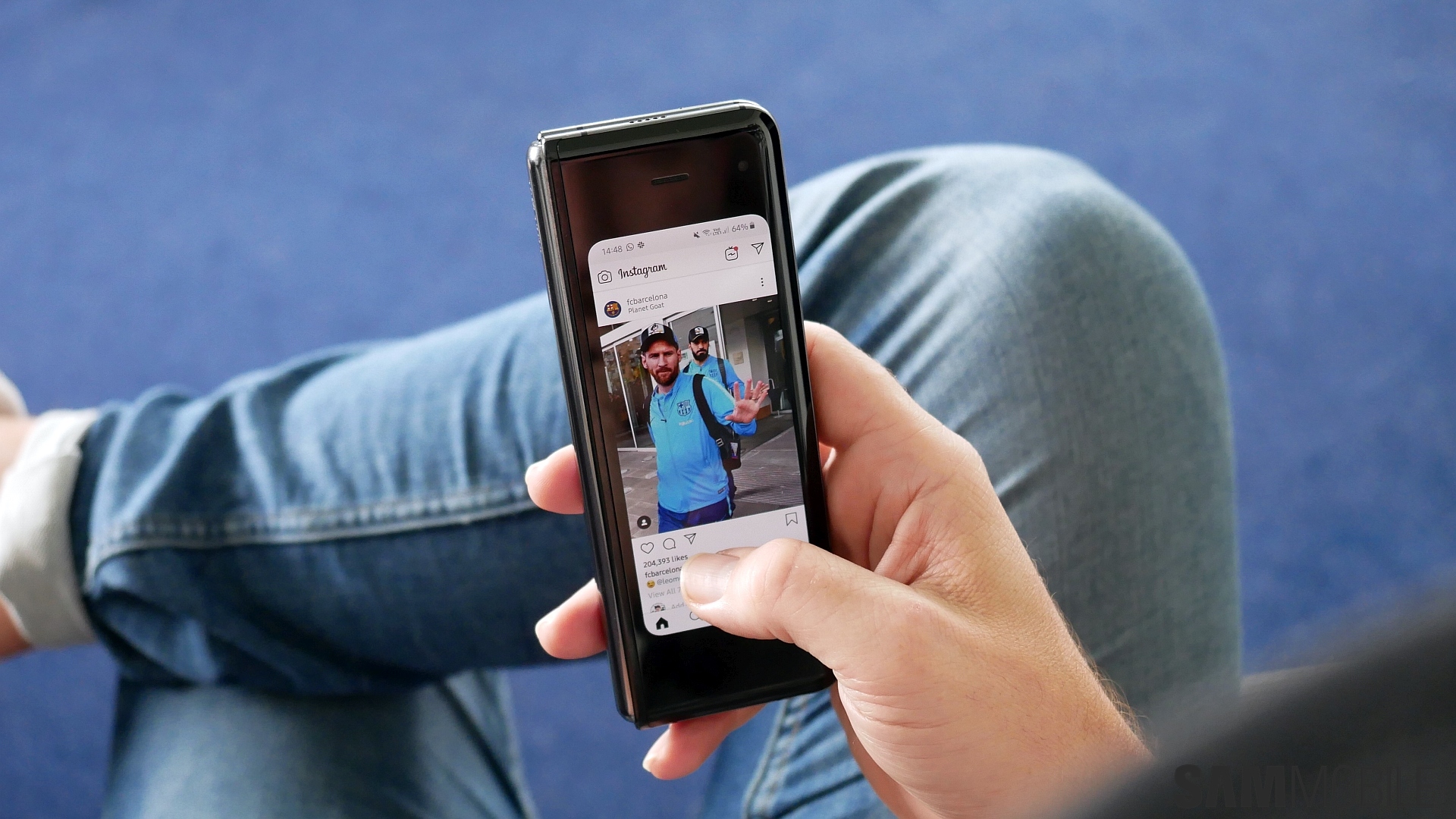
But most apps run fine when fired up in tablet mode, even if they don’t all offer any special advantage on a bigger screen. And if you’re a gaming fan, you’ll find no issues whatsoever, as game developers are always leading the way when it comes to adopting new form factors and new OS features. The cover display is too small for shooting and other games where you have to have multiple fingers on the display to hit various buttons, but it’s fine for the occasional bout of Temple Run and gesture-based games.
Multitasking freaks will love the three-app Multi Window. You can have up to three apps simultaneously and freely resize their windows and move them around. You open one app, then swipe in from the right to access a menu with all your app shortcuts and drag an app out and then repeat it for the third app. And it’s also great to type on the 7.3-inch display. The Samsung keyboard splits between the middle like it would on a regular tablet, and it was surprisingly easy to get used to.
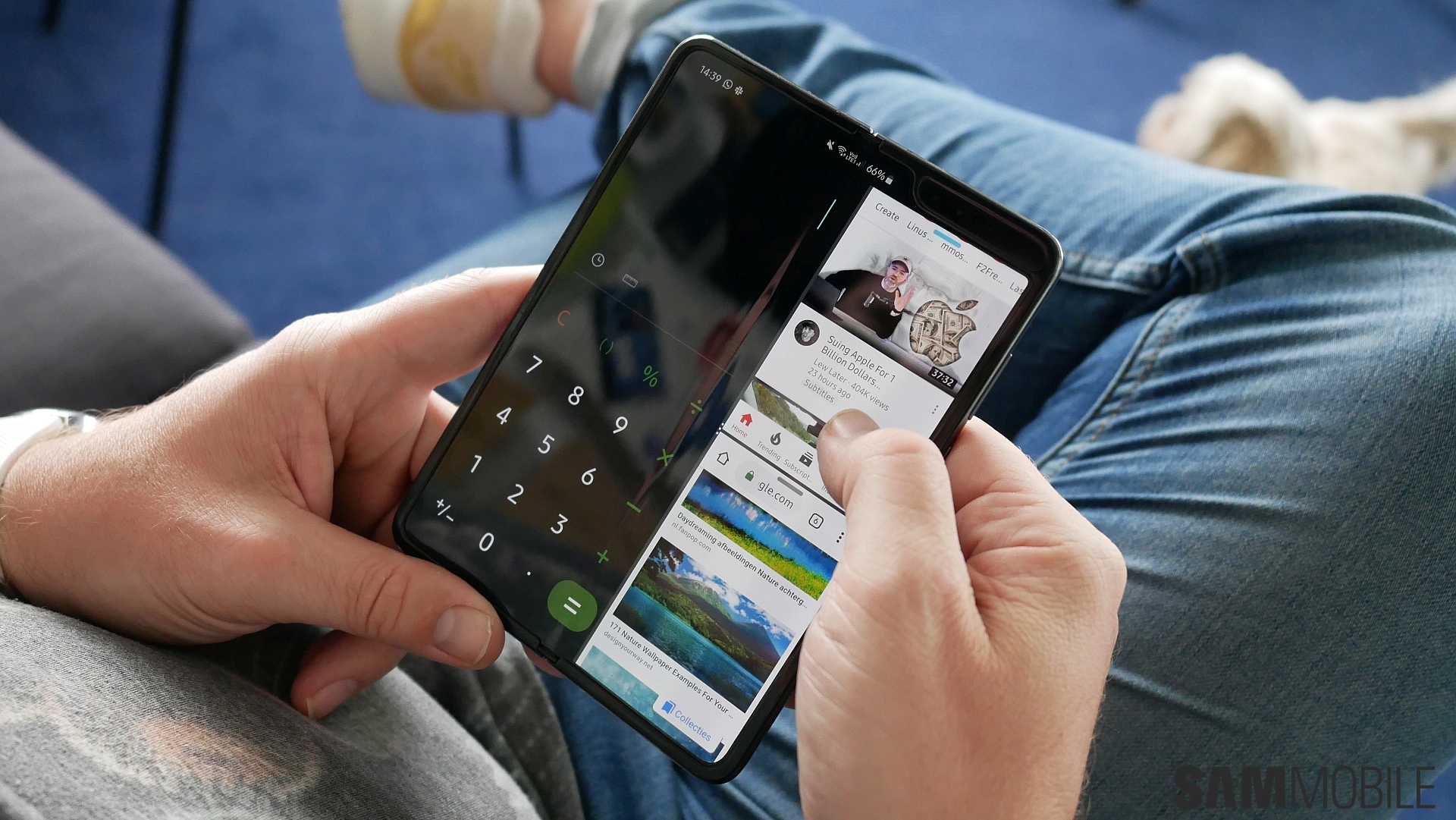
Samsung has worked together with Google on the software for its foldable smartphone, but that doesn’t mean the experience is as good as it can be. However, most issues simply seem to stem from the fact that developers haven’t had the time to update their apps to play well with the Galaxy Fold. Things should get better once it’s released for consumers and software updates should also improve things, especially minor problems and limitations, like the fact that there’s no option to set the same wallpaper on the cover and main display with one tap — each must be set separately.
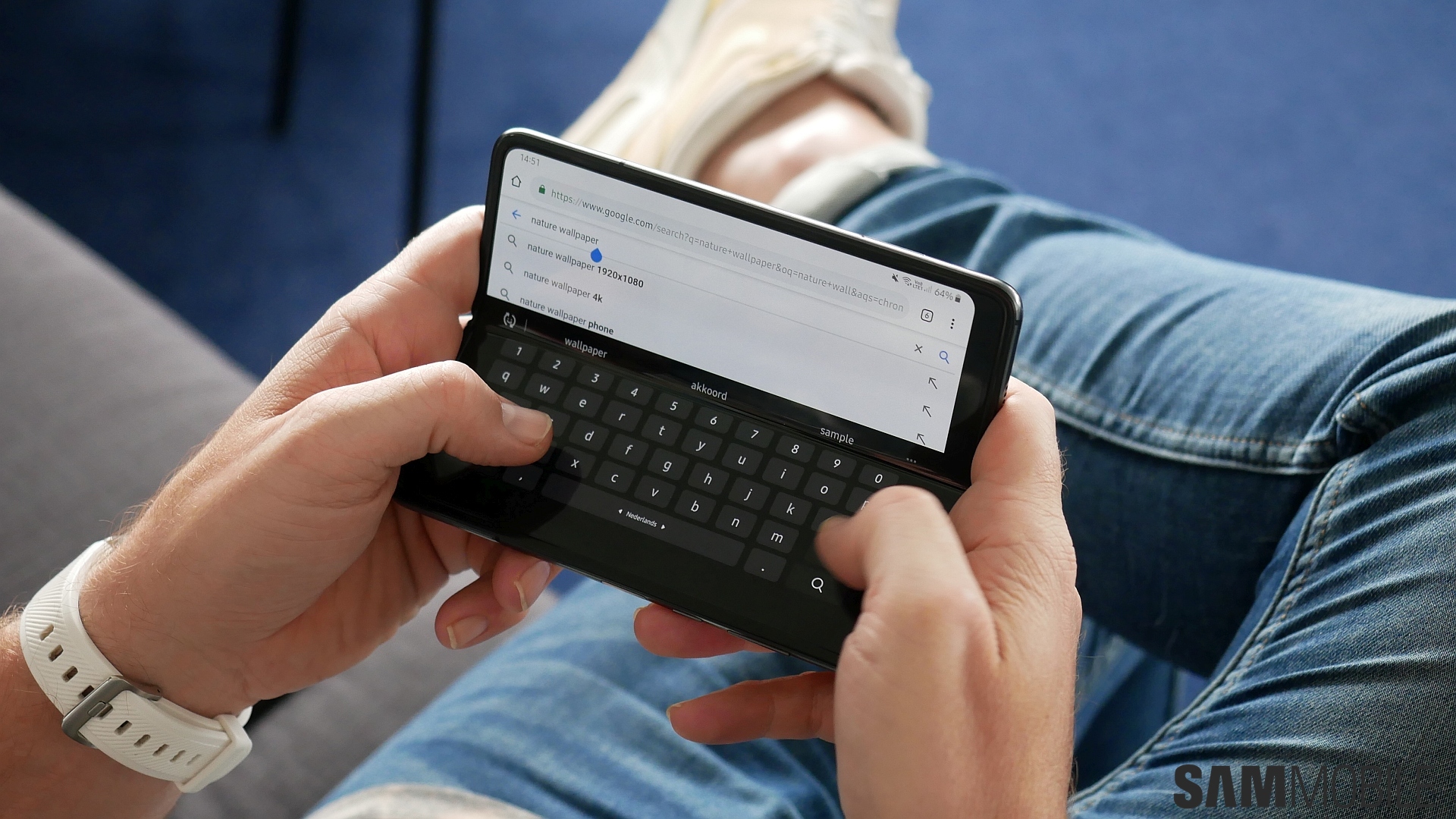
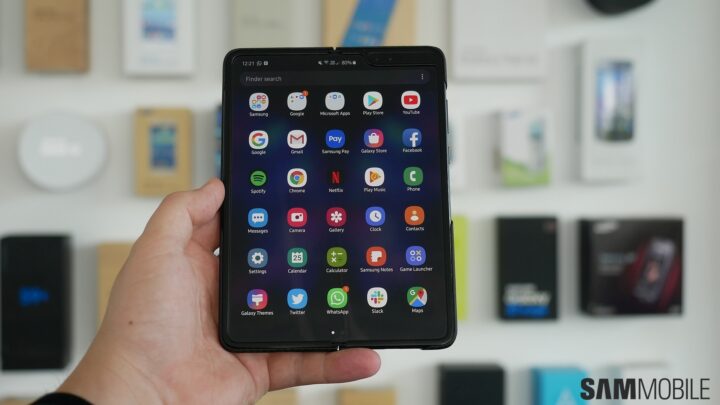
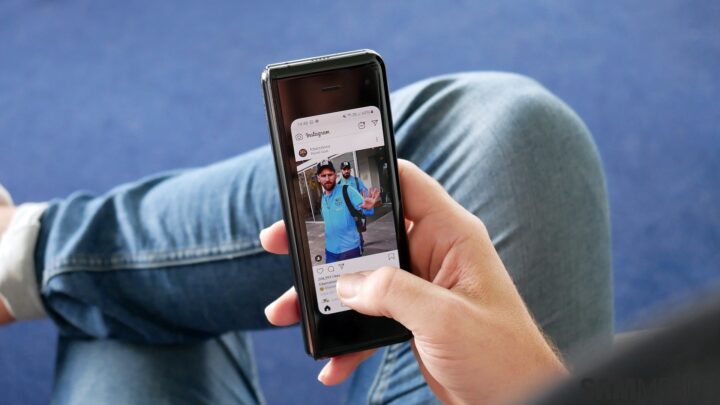
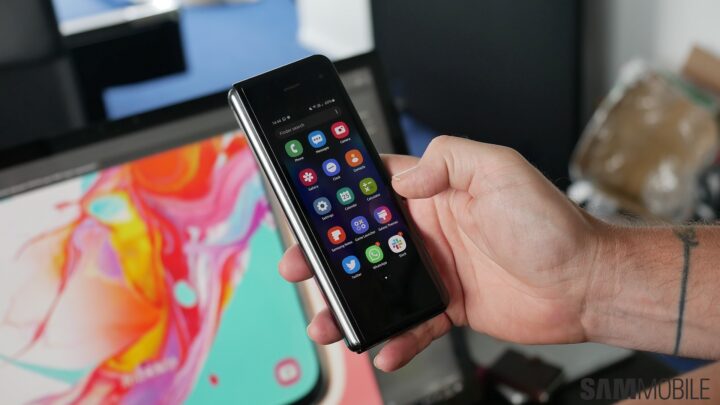
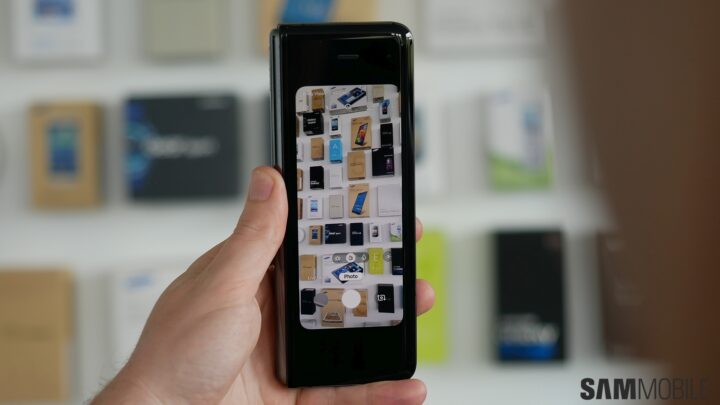
Galaxy Fold cameras
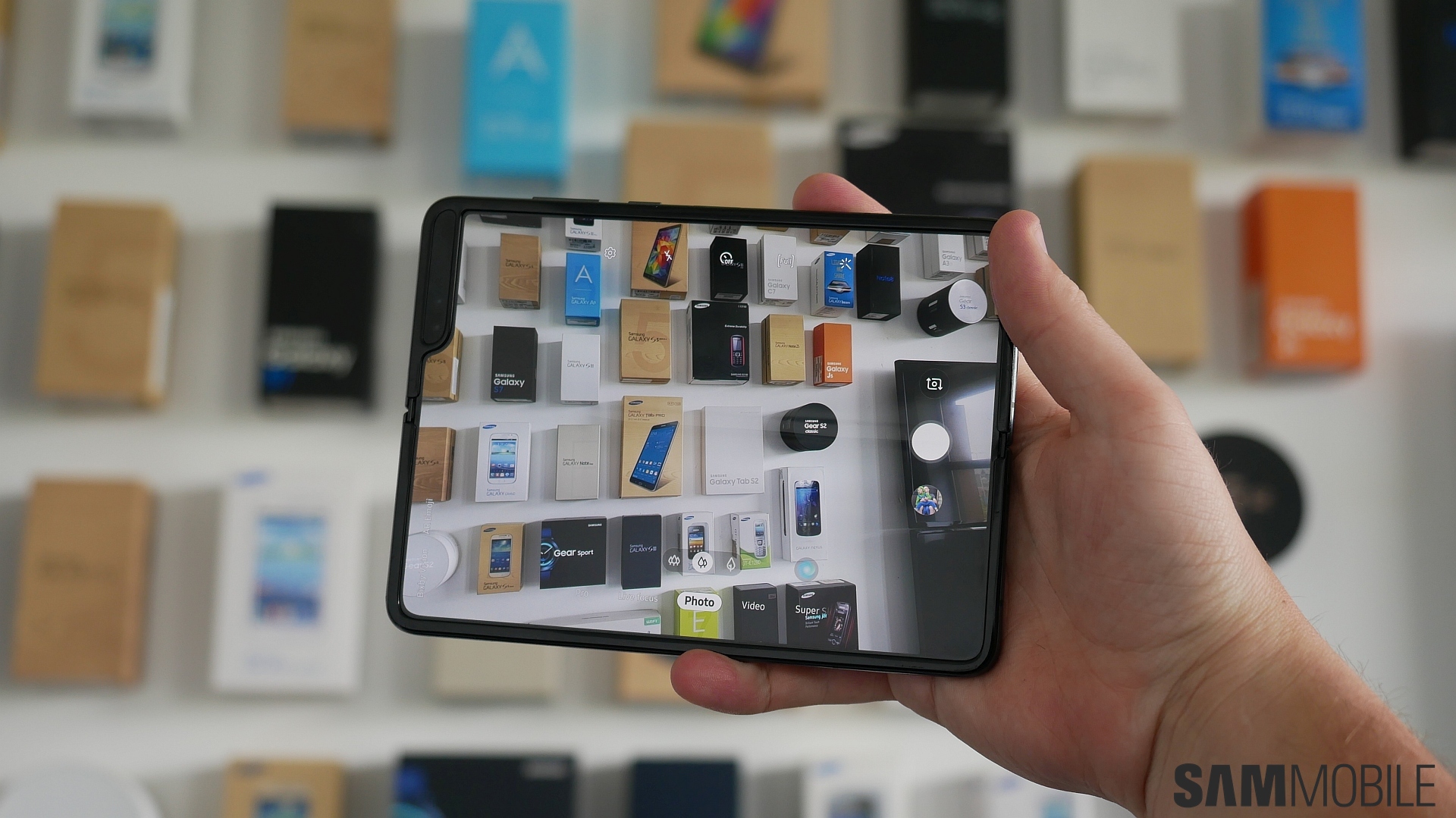
The Galaxy Fold comes with no less than six cameras. Don’t be fooled by the number, though. Samsung is using the same sensors here that you find on the Galaxy S10+. There’s three rear cameras that you use in both folded and unfolded state: a 12MP F1.5 primary camera, a 16MP F2.2 ultra-wide camera, and a 12MP F2.4 telephoto camera. In tablet mode, you can take selfies and make video calls using the 10MP + 8MP dual camera setup, and when folded, there’s a single 10MP sensor for those tasks.
While the camera viewfinder is beautiful to see on the 7.3-inch AMOLED panel, the image quality on the Galaxy Fold cameras is the same as the Galaxy S10+, so you should check out our S10+ review for an in-depth camera analysis. In short, you can take excellent photos in all but the toughest of lighting conditions, with the ultra-wide camera coming in very handy. You also have features like Super Slow-mo videos, AR Emoji and Live Focus at your command.
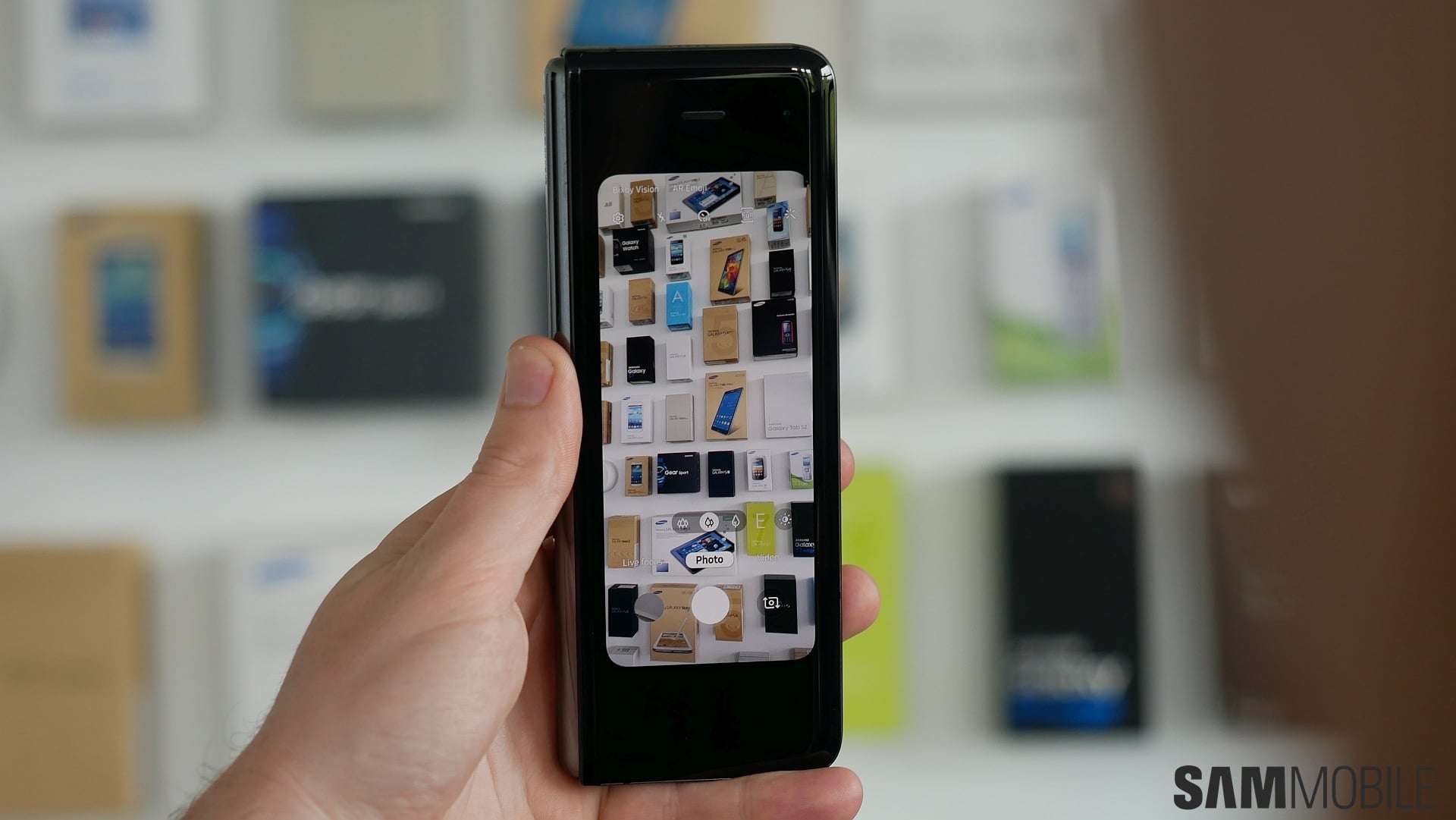
The Fold can’t, however, offer the kind of sharpness you see in low-light photos from some Huawei phones and the Google Pixel devices, and there’s no Bright Night/Night mode feature to help you in really dark situations. It also lacks a dedicated Instagram mode unlike the S10, but we’re guessing all of those will be added later on with a software update.



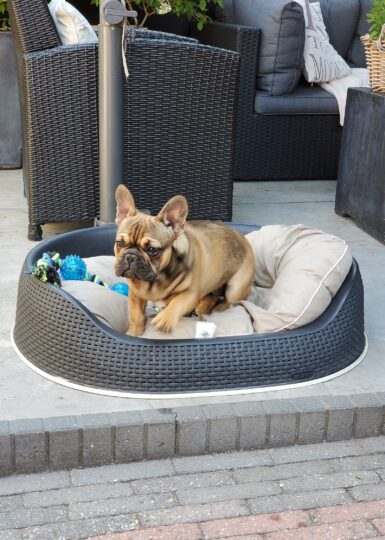
Galaxy Fold performance and battery life
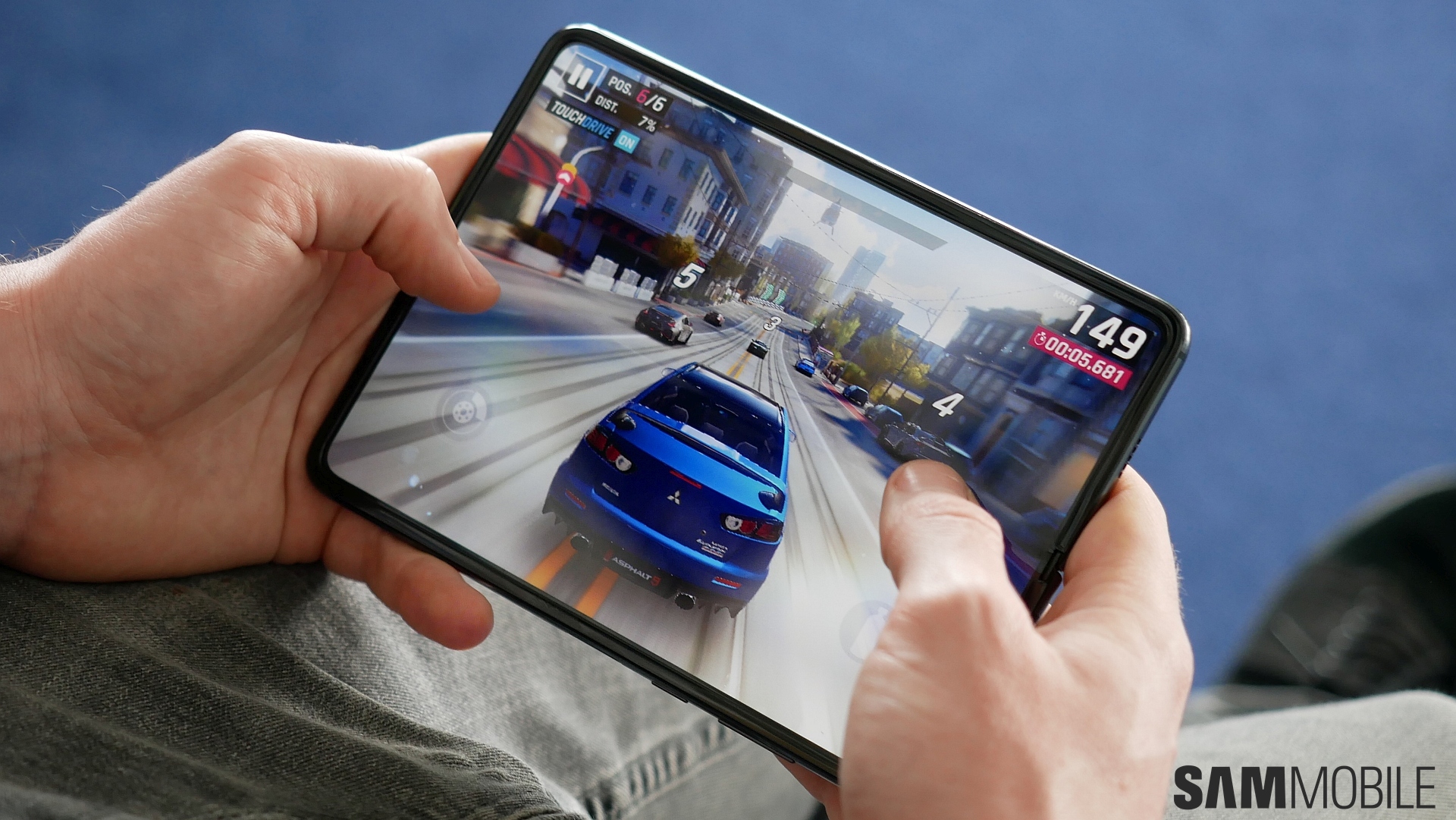
With a Snapdragon 855 and 12GB of RAM powering the Galaxy Fold, it shouldn’t surprise you to hear that performance on the device was excellent throughout, with no stutter or lag in a week of use. I was also impressed by the battery life. This is the first time in many years that SamMobile has received a Galaxy flagship with a Snapdragon chip since Samsung launches the Exynos model in Europe, and it made me wonder what Samsung has done with its latest Exynos chip.
The Snapdragon 855 performs great while also being an energy saver. I could easily cross six hours of screen time with plenty of use in tablet mode on the first full charge, and battery life has been consistently good. That said, a larger battery would have been nice to have. The Fold has a 4380 mAh battery capacity, which is just 380 mAh higher than the Galaxy S10+ and isn’t enough for long bouts of heavy usage, especially when you’re on the move.
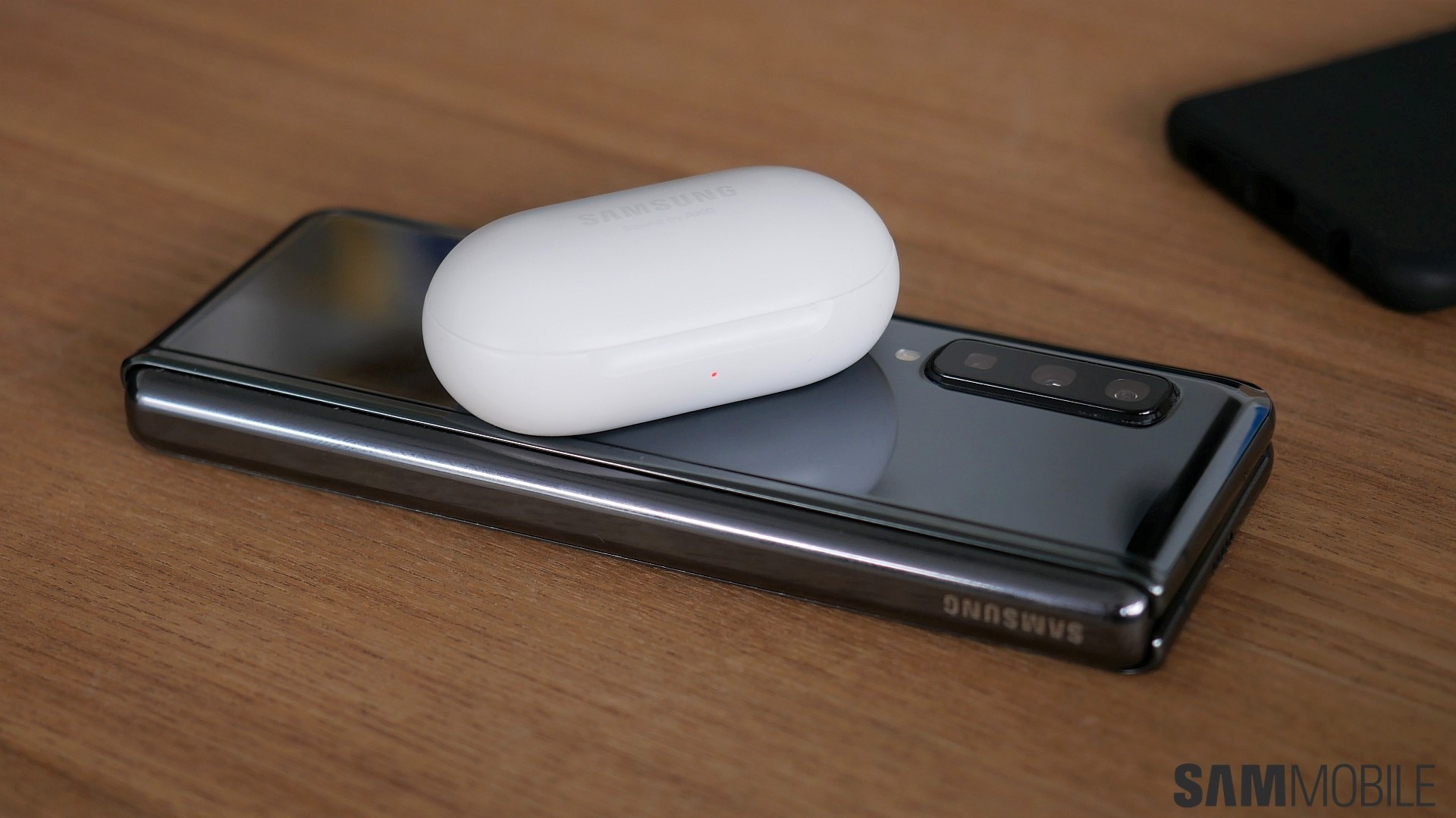
And it’s sad that the Fold, like the non-5G Galaxy S10s, comes with the same old 15W fast charging speeds, not the 25W super fast charging that the Galaxy S10 5G and even the mid-range Galaxy A70 and Galaxy A80 offer. Even the 5G Galaxy Fold is listed with 15W charging while having a slightly smaller battery than the LTE variant. It’s a major point of contention for a device so costly, even if the price is pretty attractive considering the rest of the package.
Wireless charging fans don’t need to worry, thankfully. The Galaxy Fold supports fast wireless charging and can charge other devices wirelessly through the Wireless PowerShare feature that debuted on the Galaxy S10 lineup. And no, wireless charging does not work when the device is unfolded, in case you were wondering.
Galaxy Fold audio
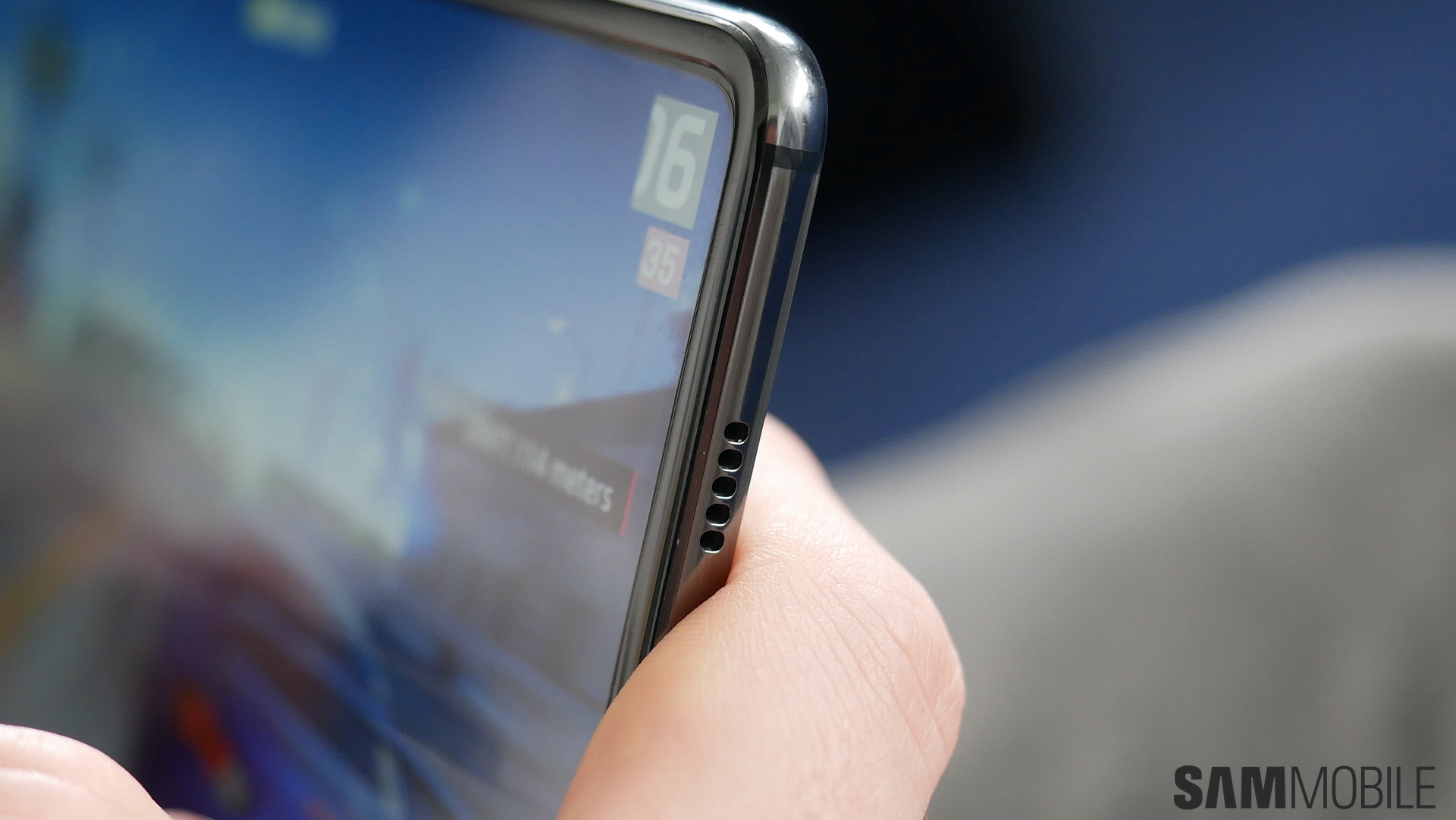
With stereo speakers and Dolby Atmos support, you’d think the Galaxy Fold has the same audio chops as the Galaxy S10. Well, that’s not the case. That’s because the Fold gets two dedicated speakers for audio, and a separate earpiece for calls above the cover display on the outside. The Galaxy S10 (and every other Galaxy phone with stereo speakers) uses the earpiece as the second speaker of the stereo setup. It’s loud, but the Fold’s audio output is louder. The speakers also sound fantastic, making the Fold an excellent media device when coupled with that foldable AMOLED display.
Here’s an odd thing about how the Fold handles calls, though. If you get a call when you’re using the 7.3-inch display, you can answer the call, but it’s still the earpiece above the cover display that gets activated. This is probably a minor oversight that Samsung forgot to address while designing the experience of switching between the main and cover displays, and it came across as a funny bug rather than something you would complain about.
Galaxy Fold verdict
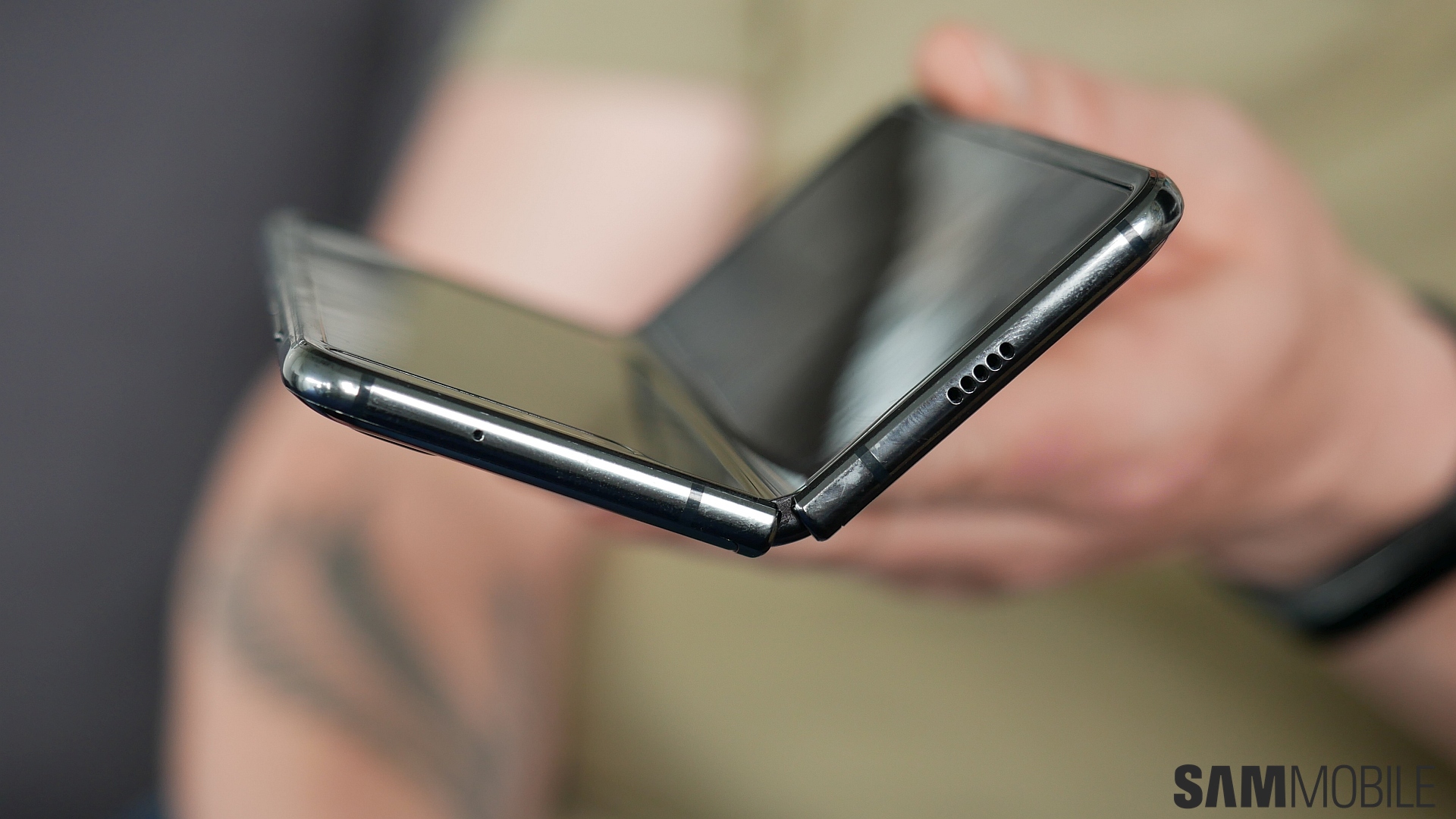
There’s no doubt that the Galaxy Fold shows us the future of mobile devices, where we could have a tablet masquerading as a phone in our pockets. However, it’s not perfect at the moment, and Samsung has delayed the launch in order to fix the problems with the Fold. We believe Samsung was so focused on the complexities of folding a display and putting it in the hands of consumers that it lost sight of the basics and overall quality control somewhere along the way.
But one thing is for sure: As long-time Samsung fans, we’re very proud to see what the company is capable of. The first foldable phone really is around the corner. This is the real thing, and no matter how long it takes Samsung to patch it up and put it back on sale, the Galaxy Fold will always be an impressive product, especially as a first-generation device.
The software is ready, barring a few issues that software and app updates could easily fix, and the hardware is almost ready. Should you order one once it’s back on sale? Not if you can’t risk $2,000/€2,000. If you can and are keen on being early adopters of a technical achievement like the Fold, sure, why not? We loved our time with the Galaxy Fold and it’s too bad we can’t keep it any longer, but we’ll surely be waiting with baited breath for its (hopefully) eventual return.
Keep an eye out on SamMobile for more on the Galaxy Fold in the coming weeks and an updated review when it goes on sale again. We are also working on a video review that we will add to this review in the next couple of days.
| Pros |
Cons |
| Foldable display feels straight from the future, excellent AMOLED panels outside and inside |
Cover display is a bit too small |
| Stunning, premium design |
Notch on main display should have been smaller |
| Solid folding and unfolding mechanism |
No notification LED |
| Excellent performance |
Software has kinks that need to be ironed out |
| Software that takes advantage of the form factor |
Inconvenient fingerprint sensor placement |
| Great cameras |
No 25W fast charging like Galaxy S10 5G |
| Long-lasting battery |
Samsung should have better tested the basics for dust protection |
| Fantastic stereo speakers with Dolby Atmos, Galaxy Buds included in box |
|
|
|
The post Samsung Galaxy Fold ‘review’: The future is (almost) here appeared first on SamMobile.
from SamMobile http://bit.ly/2UJOt8i
via
IFTTT
